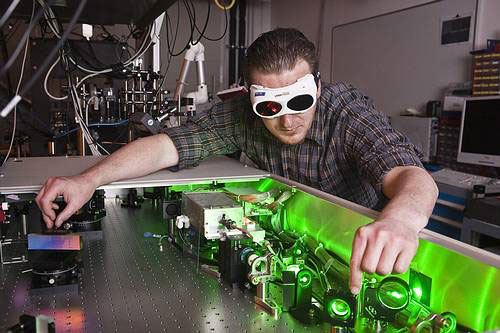 With its main research areas of quantum engineering and space-time research, QUEST is the only cluster of excellence for physics in the North of Germany. QUEST's recently published interim report gives an overview of current research topics and achievements so far.
With its main research areas of quantum engineering and space-time research, QUEST is the only cluster of excellence for physics in the North of Germany. QUEST's recently published interim report gives an overview of current research topics and achievements so far.
Nov 15th, 2010
Read more
An international team of physicists, including a scientist based at The University of Queensland, has recently closed an additional 'loophole' in a test explaining one of science's strangest phenomena - quantum entanglement.
Nov 15th, 2010
Read more
The National Institute of Advanced Industrial Science and Technology (AIST) and College of Nanoscale Science and Engineering (CNSE) of the State University of New York signed a memorandum of understanding on September 30, 2010 on cooperative research cooperation in nanotechnology, electronics and other fields.
Nov 15th, 2010
Read more
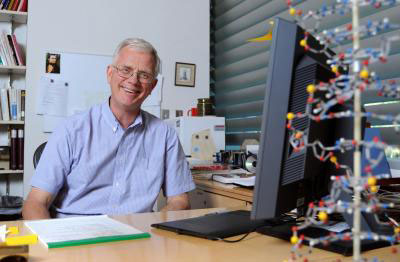 Stuart Lindsay, of the Biodesign Institute at Arizona State University, has demonstrated a technique that may lead to rapid, low cost reading of whole genomes, through recognition of the basic chemical units - the nucleotide bases that make up the DNA double helix.
Stuart Lindsay, of the Biodesign Institute at Arizona State University, has demonstrated a technique that may lead to rapid, low cost reading of whole genomes, through recognition of the basic chemical units - the nucleotide bases that make up the DNA double helix.
Nov 14th, 2010
Read more
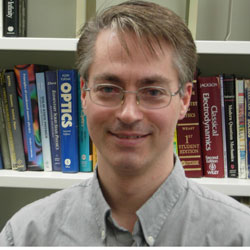 Combined optic and electronic technology holds promise for new nanoscale sensing devices.
Combined optic and electronic technology holds promise for new nanoscale sensing devices.
Nov 14th, 2010
Read more
Peptides have been generated that have binding affinity to carbon nanostructures and particularly carbon nanotubes. Peptides of or the invention are generally about twelve amino acids in length. Methods for generating carbon nanotube binding peptides are also disclosed.
Nov 13th, 2010
Read more
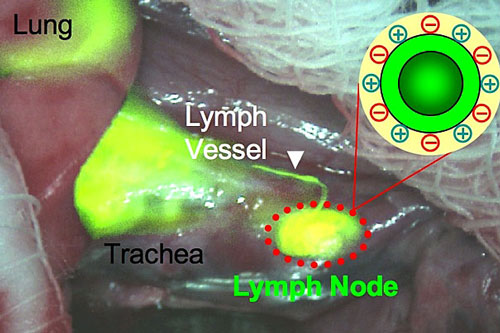 Using a real-time imaging system, scientists have tracked a group of near-infrared fluorescent nanoparticles from the airspaces of the lungs into the body and out again, providing a description of the characteristics and behavior of the particles that could be used in developing therapeutic agents to treat pulmonary disease. The findings could also offer a greater understanding of the health effects of air pollution.
Using a real-time imaging system, scientists have tracked a group of near-infrared fluorescent nanoparticles from the airspaces of the lungs into the body and out again, providing a description of the characteristics and behavior of the particles that could be used in developing therapeutic agents to treat pulmonary disease. The findings could also offer a greater understanding of the health effects of air pollution.
Nov 13th, 2010
Read more
 Engineers from Harvard University have designed and demonstrated ice-free nanostructured materials that literally repel water droplets before they even have the chance to freeze.
Engineers from Harvard University have designed and demonstrated ice-free nanostructured materials that literally repel water droplets before they even have the chance to freeze.
Nov 13th, 2010
Read more
Inside laboratory No. 2 at IBM's new nanotechnology research facility, no can hear you scream. Once the heavy door is closed, the laboratory is essentially noise-free, insulated from electromagnetic waves and vibrations that can disrupt sensitive nanotech experiments.
Nov 12th, 2010
Read more
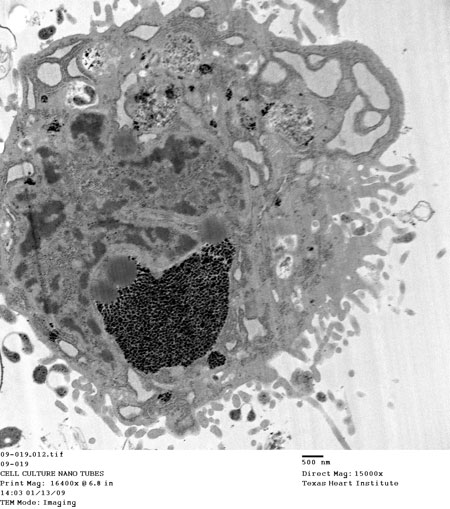 Gadonanotubes (GNTs) developed at Rice University are beginning to show positive results in a study funded by a federal stimulus grant through the National Institutes of Health (NIH) last year.
Gadonanotubes (GNTs) developed at Rice University are beginning to show positive results in a study funded by a federal stimulus grant through the National Institutes of Health (NIH) last year.
Nov 12th, 2010
Read more
To better serve its more than 150,000 users this year, nanoHUB.org is establishing a User Group to serve as a forum to facilitate the exchange of ideas among nanoHUB users.
Nov 12th, 2010
Read more
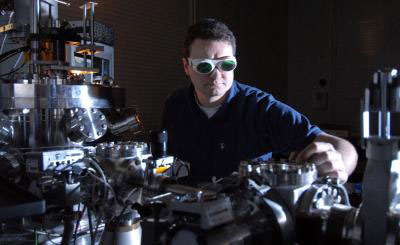 TU Munich physicist Reinhard Kienberger received the 2010 ICO Prize for pioneering contributions to attosecond physics. One of the main goals of this new scientific discipline is to capture snapshots of the inner life of atoms.
TU Munich physicist Reinhard Kienberger received the 2010 ICO Prize for pioneering contributions to attosecond physics. One of the main goals of this new scientific discipline is to capture snapshots of the inner life of atoms.
Nov 12th, 2010
Read more
The National Cancer Institute (NCI)'s Nanotechnology Characterization Laboratory (NCL), part of NCI's Alliance for Nanotechnology in Cancer, is an accomplished source for testing nanomaterials for biomedical applications and is now partnering with the National Institute of Environmental Health Sciences (NIEHS) to characterize engineered nanomaterials used in risk/hazard studies.
Nov 12th, 2010
Read more
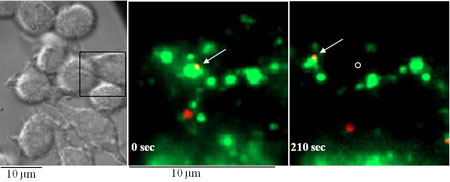 In a recent study, scientists at EMSL and Pacific Northwest National Laboratory discovered cellular interactions of nanoparticles at the molecular level that may lead to answers about how these particles impact living systems.
In a recent study, scientists at EMSL and Pacific Northwest National Laboratory discovered cellular interactions of nanoparticles at the molecular level that may lead to answers about how these particles impact living systems.
Nov 12th, 2010
Read more
Im Rahmen des Forschungs- und Entwicklungsprogramms 2010-2013 hat die BAuA einen Forschungsschwerpunkt 'Nanomaterialien' mit den Aktivitaetsfeldern 'Arbeitsplatzbelastungen bei Taetigkeiten mit Nanomaterialien' und 'Toxikologische Risikocharakterisierung' eingerichtet und entwickelt begleitend 'Beitraege zur Vorsorgestrategie fuer Nanomaterialien'.
Nov 12th, 2010
Read more
The Graphene Week 2011 conference will be devoted to science and technology of graphene, advances in its growth and chemical processing, manufacturing graphene-based devices and studies of electronic transport, investigation of physical properties using ARPES, STM and AFM, emerging applications of this new material.
Nov 12th, 2010
Read more
 With its main research areas of quantum engineering and space-time research, QUEST is the only cluster of excellence for physics in the North of Germany. QUEST's recently published interim report gives an overview of current research topics and achievements so far.
With its main research areas of quantum engineering and space-time research, QUEST is the only cluster of excellence for physics in the North of Germany. QUEST's recently published interim report gives an overview of current research topics and achievements so far.







 Subscribe to our Nanotechnology News feed
Subscribe to our Nanotechnology News feed